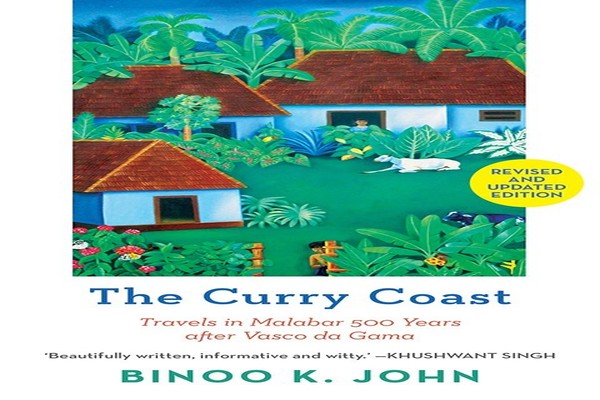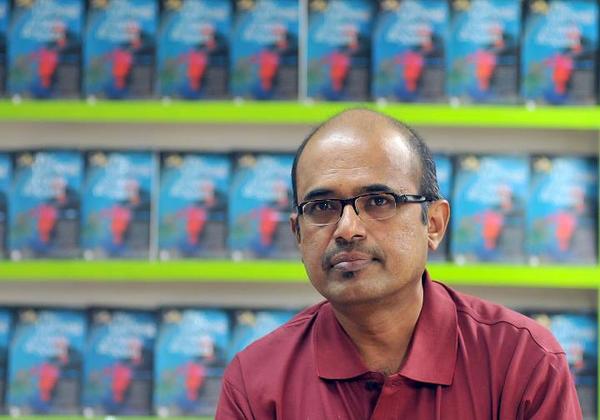05/12/2016
Cartoonist E.P. Unny has this hilarious take on Malayalees. He says if you see a group of people at India Gate in New Delhi admiring the war memorial on a cold December morning wearing no warm clothes, make sure they are Malayalees. This is a tribe that can travel anywhere with little preparation. And if you go by Binoo K. John's travelogue, 'The Curry Coast,’ this mental preparedness of Keralites to travel anywhere has made their state one of the richest and most cosmopolitan places in India, with overseas remittances doing wonders for it’s fortunes.
This delight of a travelogue by Binoo, a New Delhi-based journalist, is a re-issue of the original published in 1998-99 by a small publishing company, which, like many rare books, manuscripts and maritime maps, has only two copies left in the whole world. The new edition published by Speaking Tiger comes with a new introduction by the author, which itself is a veritable account on Kerala's socio-economic and cultural changes during the last 18 odd years. Binoo’s understatements, typical to a Malayalee, make the introduction excel any academic take on the subject.
The way in which the author worked through gourmet pleasures justify the book’s title. Rare are such writers who could blend the spicy tastes of a regional cuisine with hardcore history, and I should say this book is not only an auditory delight, but an olfactory one too. The sweet dullness after a wholesome meal, however, doesn’t damp Binoo’s ever-alert mind in unravelling historical layers with clinical impartiality, and at times with incisive dark humor.
All travelers aren’t good readers, though they read to prepare themselves for their travels. All readers are not good travelers either, but there are some who are exceptions. Binoo belongs to this exclusive club. His reading isn’t just history or what we call sthalapuranam (saga of the land.) He is a reader of signs, lifestyles, attitudes, environments and a region's general ethos. The area that he chooses for his journey – Malabar – isn't huge; one could cover the five districts in this region in 48 hours by road. Binoo, knowing that he is to write a travelogue, takes three weeks, that too when mobile phones, Internet, and credit cards were few and far between in Kerala. Like a character in Orhan Pamuk's 'New Life,' Binoo travels by buses that move at speeds he just can’t come to terms with.
Malabar is a historian's delight and bane at once. The Samoothiris, who received the great Portuguese Argonaut, weren’t interested in leaving huge footprints in the forms of forts, palaces and art. Mired by regional conflicts, da Gama and later the Dutch and the British were seen not only as potential trade partners, but also as strong allies to be used in regional wars. The strange customs of ritualistic suicide and coronation of a new king and so on gave an adequate field for colonialism to grow, both in trade and commerce as well as in wrenching political power. Binoo travels into the history of Malabar and colonialism by referring several scholarly texts and also by personally interviewing many a historian and chronicler.
The feel of cuisine never leaves the narrative as Binoo, being a great foodie, tops each historical narrative with a mouthwatering splash of edibles, keeping the narrative as enjoyable as an exotic spread. History intersperses with contemporary life of Kerala and the author doesn’t fail to weave them together like the warp and weft of Kannur handloom. The warring history of Malabar or the history of wars waged there, once contrasted by Binoo with the contemporary political realities, explains why there are more political killings in these parts of the state than elsewhere. While travelling in this region, the author culls a variety of contributions made by exceptional people, from a trapeze artist who enthralled Hitler with his amazing acrobatic abilities to the Ayurvedic exponents of Kottakkal. Binoo's eyes don’t lose sight of the life of adivasis and their chronicles. And when there is talk of them, how can he miss the history of Naxalism in Kerala?
Calm and serene beaches lay stretched in Kozhikode and Kannur. Ancient forests and hills sooth people on the other side, Wayanad. Palm fronds moving in breeze lull them to sleep. The toddy shops are inviting. The music of cicadas and frogs accompany your lazy trips inside the villages. Binoo says these must be the reason why Malayalees stopped doing any physically taxing work in their home state. Still, they travel in search of jobs and eventually lead a retirement life in Kerala inside gated colonies quite evocatively named Chicago. Binoo travels to Kochi, Kottayam and Goa to tie the loose ends of his narrative and that adds to the pleasure of this book. If you ask me, I would say, the Curry Coast is a travelogue that is destined to survive time like a true classic


